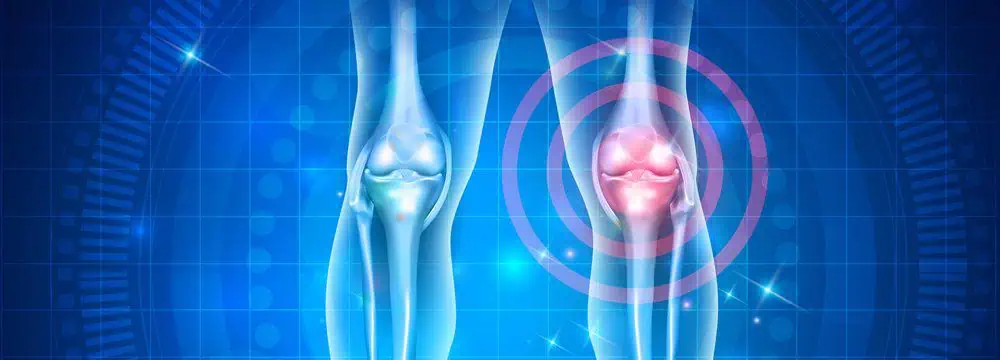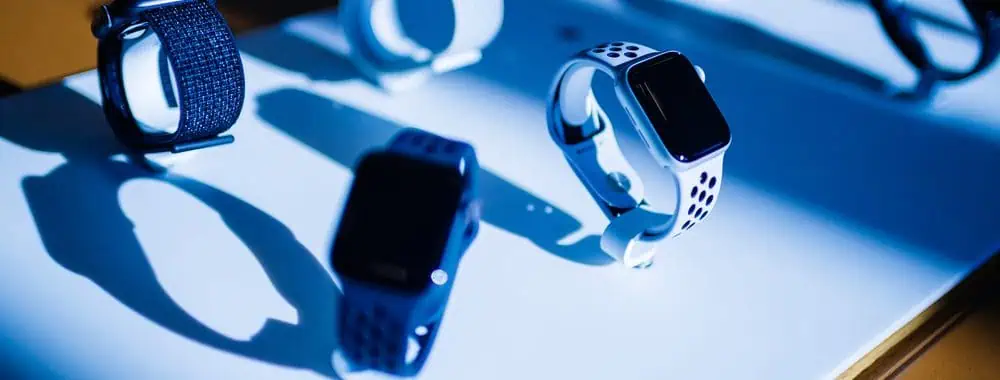One of the biggest steps to changing your life is exercise. Personally, I felt like I was too old to start exercising now. However, it turns out that walking also counts as exercise and has most of the health benefits of tougher forms of physical activity, except it’s… a walk in the park!
So, what can walking 2 miles a day actually do for you? It’s an easy yet powerful way to energize your body, sharpen your mind, and boost your mood. This simple daily practice promises better health, from heart to head. Keep reading to discover the incredible benefits of walking 2 miles a day that await just beyond your doorstep.
Key Takeaways
- Regular 2-mile walks improve cardiovascular health by reducing the risk of heart disease and dementia, lowering blood pressure, and balancing cholesterol levels.
- Walking 2 miles a day aids in weight management through calorie burning, targeting belly fat, and can be enhanced by combining with strength training for muscle building and a higher metabolism.
- Aside from physical health, daily walking boosts mental health by relieving stress, alleviating symptoms of depression and anxiety, and promoting cognitive function.
- If you’re 45+ and struggling to find the time or inclination to exercise, walking is one of the easiest ways to get in shape.

Better Cardiovascular Health
The heart is the engine of your body, tirelessly pumping life through your veins. It seems only fitting that we return the favor by maintaining its health with a daily dose of walking. Going on a 2-mile hike every day isn’t just a lovely scenic detour; it can be a strategic move to enhance heart health and improve cardiovascular fitness.
Heart Health Hero
Walking 2 miles daily is like sending your heart to the gym, giving it the workout it needs to stay strong and efficient. As blood circulates with greater ease, your entire body reaps the rewards of improved nutrient and oxygen distribution.
The ripple effect of this enhanced circulation is profound, potentially reducing the risk of heart disease and other components of metabolic syndrome.
Blood Pressure Benefits
Don’t let high blood pressure undermine your vitality. Regular walks are your ally in the fight against this silent killer, easing the stiffness of blood vessels and boosting your cardiovascular system. Embracing a walking routine not only increases your life expectancy but enhances your quality of life.
Cholesterol Check
A daily walk also sets you on the path to balancing your cholesterol levels. This 2-mile journey isn’t just about covering distance; it’s about tipping the scales in favor of HDL (good cholesterol) and reigning in LDL (bad cholesterol). Regular walking fosters a lipid profile that fortifies cardiovascular health, making each step a strategic strike against unsafe cholesterol. And the beauty of walking? It’s flexible, so you can split it across the day, accumulating health benefits with every segment.

Weight Management
I would never have believed this without seeing it for myself. My wife went from a size 14 to a size 10 just through walking every day. She didn’t do any other exercise. Yes, it took a year, but she found it really easy to achieve a healthy weight.
Now, the latest science on weight loss has changed. It was thought that weight management was a dance between caloric intake and exercise – calories in and calories out. But only recently, scientists discovered that weight loss is about 90% diet and 10% exercise. (And when I say ‘diet’, I mean eating the right foods and not counting calories.)
In which case, how did my wife lose all that weight? As well as being good for you, walking also stops you from doing the bad things, like being sedentary all day or having less energy to do things. And once you start seeing your weight go down, your energy and willpower go up. Your mood lifts, you feel good about life, and you get excited at your own progress and start turning down that second cookie.
A pair of studies found that a 15-minute walk can curb cravings for chocolate and even reduce the amount of chocolate you eat in stressful situations.
The 10%
Walking 2 miles a day sparks your metabolism and helps gradually shed unwanted pounds, one step at a time. This isn’t about quick fixes, though. It’s about lasting change and the benefits of losing weight.
The key is raising your heart rate – or what’s called moderate-intensity aerobic exercise. Depending on your pace and weight, a 2-mile walk can incinerate 100-300 calories. And if you quicken your pace, the calorie burn accelerates. So, how many calories can you burn? The answer lies in your determination and effort.
Even the terrain can conspire in your favor – a hill demands more energy, burning more calories than a stroll on flat ground.
The biggest beneficiary of exercise is actually your brain and not your body. However, the benefits of good brain health cascade down to your body:
- More energy = more movement
- More willpower
- Better sleep
- Less tired = even more willpower and energy
- Less stress = better diet (we reach for sugar when we’re stressed)
- Clearer thinking = greater desire to lose weight
Combatting Belly Fat
Generally speaking, when the body begins to store fat, it starts with your ass! The body considers this a safer zone away from important internal organs. After that, you know exactly where it tends to go.
A lot of where your fat is actually stored is genetic, particularly for women. And that also goes for where you lose the fat from first. For the majority of people, it goes from around their internal organs first, which is a good thing as that’s where it can do the most harm. For some, it can be the face and neck that are affected before moving on to your midsection.
Most people are trying to lose belly fat when they go on a diet, so you may just have to be a little more patient.
Synergy with Strength Training
The alliance of walking and strength training is a formidable force that builds muscle and boosts metabolism. Incorporate weights into your walking routine and watch as your workout intensifies, elevating your metabolic rate to new heights. This isn’t just about shedding pounds but also crafting a more resilient, powerful you.
With a balanced diet and the added resistance of weights, you’ll be creating a physique that’s not just lean but strong.

Boost Your Mental Health and Mood
The benefits of walking extend beyond the physical realm and into the terrain of your brain. A 2-mile walk can bring a state of mental clarity and emotional calm through having time to think and reconnect with our environment.
This simple act can be a powerful catalyst for mood enhancement and stress reduction and a weapon against the shadows of depression and anxiety.
Walk Away from Stress
Imagine shedding pounds, but also the weight of stress with each step you take. Walking is your personal stress relief program, releasing those coveted endorphins that elevate your mood and soothe your nerves, too. It’s a chance to:
- Step away from the daily grind
- Immerse yourself in a moving meditation
- Step away tension
- Curb stress-induced cravings
- Reconnect with nature or your local environment
The path to relieving stress is at your feet – you just have to walk it.
Depression and Anxiety Alleviation
The benefits of walking for depression and anxiety include:
- Lifting your spirits
- Disrupting the cycle of stress hormones
- Benefitting from the natural high of endorphins
- The restorative power of sleep
Walking can be a powerful ally in your battle against the blues.
Each step you take advances not only your physical progress but also your journey towards mental wellness, contributing to your overall physical and mental health.
Cognitive Clarity
The benefits of walking for your brain are as clear as the path ahead. Increased blood flow from walking nourishes your neurons, sparking increased cognitive performance and guarding against neurodegenerative diseases. Walking once a week can reduce your chances of developing Alzheimer’s disease by 45%.
Walking is a workout for your body and mind, promoting creativity, focus, and a sharpness of thought that can keep you agile and alert for years to come.

Walking for Increased Energy
We already know that the benefits of exercise last for many hours afterwards. A walk after breakfast can energize you for the rest of the morning.
Walking stimulates the release of endorphins, which make you feel happy. This is a great benefit in itself but will increase the likelihood that you’ll continue to do it.
Oxygen Optimization
The breath of life flows more freely when you walk. Oxygen optimization is at the heart of this surge in vitality, as walking increases the uptake of this essential element, enhancing cardiovascular fitness and empowering you with enduring stamina.
Each brisk step is a breath of fresh air for your cells, a rejuvenation that bolsters your energy throughout the day.
Metabolic Momentum
The fire of your metabolism is stoked with each stride you take. Walking not only burns calories in the moment but also amplifies your body’s calorie-burning capabilities long after you’ve stopped moving.
Embrace the ebb and flow of walking speed to maximize this effect, transforming your metabolism into a dynamic engine of weight management and energy production.

Pain Reduction and Joint Health
While many forms of exercise can take their toll on the joints, regular walking acts as a balm for the body, lubricating joints and easing the burden of chronic pain. This simple, rhythmic movement is a gentle yet potent remedy that supports mobility and can enhance quality of life.
Lubricating Joints
Exercise science has shown that walking, at any age, can reduce the symptoms of arthritis and, indeed, the chance of developing it in the first place. A regular walking routine compresses and releases the cartilage in your knees, helping circulate synovial fluid that brings oxygen and nourishes your joints.
Muscle Maintenance
The strength of your abdominal muscles correlates with the health of your joints. Consistent walking fortifies the muscles that cradle your joints, reducing pressure on the joints, reducing pain and protecting against injury. So, engaging the strength of your lower body and core does more than just maintain muscle.
Establishing a Sustainable Exercise Habit
The path to a healthy lifestyle begins with a single step. Establishing a sustainable exercise routine through regular physical activity is what makes big and lasting changes to your body and brain.
When I don’t really want to walk, I decide I will do a maximum of 5 minutes of walking. No more. But once I’m out there, the endorphins kick in, and 9 times out 10 I want to carry on walking.
Low Impact, High Reward
Walking is a low-impact exercise that is easy to incorporate into your routine, regardless of your fitness level. With each walk, your body acclimates, your pace quickens, and your capacity for more vigorous exercise grows.
Consistency is Key
Consistency is the heartbeat of a sustainable walking routine. By setting achievable goals and gradually increasing distances, you can easily weave walking into your daily routine. Take on walking challenges or join a walking group to infuse variety and camaraderie into your strides, if you prefer.
Mark each day on a calendar when you achieve your walking goal. After a while, you won’t want to break the 1streak you’ve achieved so far, and it will push you to walk when you don’t feel like it.
Each walk takes you not only closer to your destination but also strengthens a habit that promotes your health and happiness.

Enhance Immune Function and Disease Prevention
The fortification of your immune system is a quiet yet critical aspect of your health that often goes unnoticed – until it’s tested. A 2-mile daily walk has been proven to enhance your body’s defences and reduce the risk of chronic diseases. This daily ritual is a cornerstone of preventative care, a shield against the ailments that threaten your well-being.
Immunity Improvement
Regular brisk walking is like sending your immune system to boot camp, strengthening it and preparing it to fend off invaders. The result is not just an increase in your body’s defensive capabilities but also a reduction in sick days and milder symptoms when illness does strike.
This is your body’s way of saying thank you for the miles you’ve walked in its defence.
Chronic Disease Defender
Each step you take on your 2-mile walk is a step away from the spectre of chronic disease. The simple act of walking has the power to lower inflammation and protect against conditions such as diabetes, cognitive decline, heart disease and all other forms of metabolic syndrome, such as obesity, high blood pressure, and insulin resistance.
It’s a proactive approach to a healthier, longer life.

Sleep Quality and Walking
We know how important sleep is to our overall health, yet many of us struggle at night. Walking can even help here. too. Exercise boosts the effect of natural sleep hormones such as melatonin.
Dreamland Dynamics
I walk several times a day for several reasons:
- It splits up my walking time into bite-size chunks
- It keeps me on the move every few hours
- Different times of day all have their benefits
Walking after my evening meal reduces my cravings for sugar (I’m a chocoholic). And it increases melatonin, which gives me a longer, deeper, less-interrupted sleep. It also stops me from watching so much TV, which also acts to reduce my exposure to blue light.
Circadian Rhythm Regulation
A 2-mile walk first thing in the morning will expose you to daylight, which is a natural reset button for your circadian rhythm, the internal clock that dictates the ebb and flow of sleep and wakefulness. Jumping and starting your circadian rhythm will help you feel ready for bed in the evening.
Similarly, an evening walk in (or after) the fading light tells the body that it will soon be time for sleep.

A Step-by-Step Guide to Starting Your Walking Journey
Taking this step means… well, just starting with one single step. But if you want to make this a daily habit, preparing for that step is crucial for enjoyment and success.
Choosing the Right Gear
Your walking shoes are the foundation here, so choosing the right pair is paramount. Seek out shoes that offer:
- Support and cushioning to cradle your feet with every step
- A dual-foam midsole for shock absorption
- A contoured heel collar for stability
- Lightweight materials to keep you nimble on your feet while still offering support
And when it comes to your attire, opt for breathable fabrics that allow freedom of movement and keep you comfortable in any weather. Remember, the right gear can make all the difference in keeping you on track and motivated throughout your fitness journey.
Layer up! This is exercise, so if you don’t get warm, you’re not walking fast enough. So, I always wear layers that I can take off if I get too warm.
Mapping Your Route
First, you want to know how far you’ve walked to make sure you’re hitting 2 miles. So, look at Google or Apple maps and plot out a 2-mile course. Then time yourself. Once you have a time, you won’t need to look at a map to know how far you’ve walked.
I’ve found that variety is key to maintaining my walking habit – otherwise, I just get bored and stop. Here are some ways to add diversity to your walking experience:
- Explore different neighborhoods – I love snooping in different areas
- Seek out local parks – walking in nature is brilliant for your mental health
- Use mapping tools and apps to design scenic routes
Choosing well-lit and populated paths ensures safety and allows for assistance if needed, making your walking routine both enjoyable and safe.
Progress Tracking
For me, the satisfaction of progress is the most powerful motivator of all. So, embrace technology! Using a fitness tracker or app to monitor your steps and distance can provide a tangible sense of accomplishment. Hitting your first 2 miles creates a feedback loop that fuels your desire to keep moving forward.
The 2 that I recommend are the Apple Watch and the Oura Ring. There are plenty of others, like Garmin watches and Fitbit, but they give you less bang for your buck.
There is little difference between them: both are very accurate and measure the same metrics. The Apple Watch lets you do more with it, like telling the time, letting you pay for things, playing music, etc. The Oura ring is more discreet and comfortable at night, and it’s my preferred choice. That said, this was before Oura started charging a monthly subscription to use all of the benefits of their app. Apple Watch is one payment and done.
The Bottom Line
Imagine if I told you that something has been developed that makes you look better, feel happier and more alert, while shielding you from disease and helping you live longer.
How much would you pay for that drug?
And yet, it’s completely free – and we’ve had access to it all our lives.
A 2-mile walk each day is proven to boost your physical, mental, and emotional health. From bolstering your heart health to sculpting a leaner physique, from elevating your mood to helping you sleep, walking is the simple yet powerful stride towards a healthier you. So take that first step and walk your way to wellness.
Want more health and happiness tips?
FAQs
How does walking 2 miles a day impact heart health?
Walking 2 miles a day strengthens the heart, improves circulation, and lowers the risk of heart disease by maintaining healthy blood pressure and cholesterol levels. Just start adding this easy routine to your daily life for a healthier heart.
Can walking help me lose weight and reduce belly fat?
Absolutely! Walking burns calories, helping you reduce overall body fat, including belly fat. Walking also helps regulate sleep and reduces stress, which lessens cravings for sugary foods.
What are the mental health benefits of walking 2 miles a day?
Walking can have a positive impact on mental health by releasing endorphins, improving mood, reducing stress, alleviating symptoms of depression and anxiety, and enhancing cognitive functions. So, incorporating regular walks into your routine can be hugely beneficial for your mental well-being.
Is walking good for joint health, and can it reduce pain?
Yes, walking is good for joint health as it lubricates the joints, reduces discomfort and pain, and strengthens the muscles around joints, which can improve mobility, reduce pain and protect against injury.
How should I start my walking journey if I’m new to exercise?
Start by setting achievable goals, wearing comfortable walking shoes, and gradually increasing your distance and speed. Monitoring your progress with a fitness tracker can boost motivation.
How far is 2 miles?
Walking 2 miles – or 3.2 kilometres – is 8 laps of a standard outdoor running track. Step count varies depending on the length of your stride, but in general, 1 mile = 2,000 to 2,200 steps… so 2 miles is about 4,000 to 4,400 steps.
How long does it take to walk 2 miles?
It depends on how fast you walk. If you’re a fast walker, you can do 1 mile in 13 minutes. However, most people walk at a pace of about 20 minutes per mile. So, if you’re planning your time, give yourself 25 to 40 minutes. Remember, you will get quicker the more you do it.
How many calories will I burn walking 2 miles a day?
It depends on your walking pace and weight. But you can expect to burn somewhere between 100 and 300 calories on a 2-mile walk.
How can I find the time to exercise?
We all need to go places, and your feet are the most reliable mode of transport. They don’t go on strike and are never in the garage for repairs. And there are so many opportunities – walk instead of drive, take the stairs, etc.
Editorial Process
We believe in writing honest and unbiased reviews based on real-world experience. For more details, read our editorial process.
Some of the links in this article may be affiliate links, which can compensate us at no cost to you if you make a purchase. These are products we’ve personally used and tested. This site is not intended to provide financial or health advice. You can read our affiliate disclosure in our privacy policy.
Richard Riviere is a former 9-5er who was fat, frazzled, and fifty.
“There has to be more to life than this”, he decided. So, quit his 30-year career to research how to become healthier and wealthier after 50.
He now teaches other midlifers how to start living life on their own terms again.
